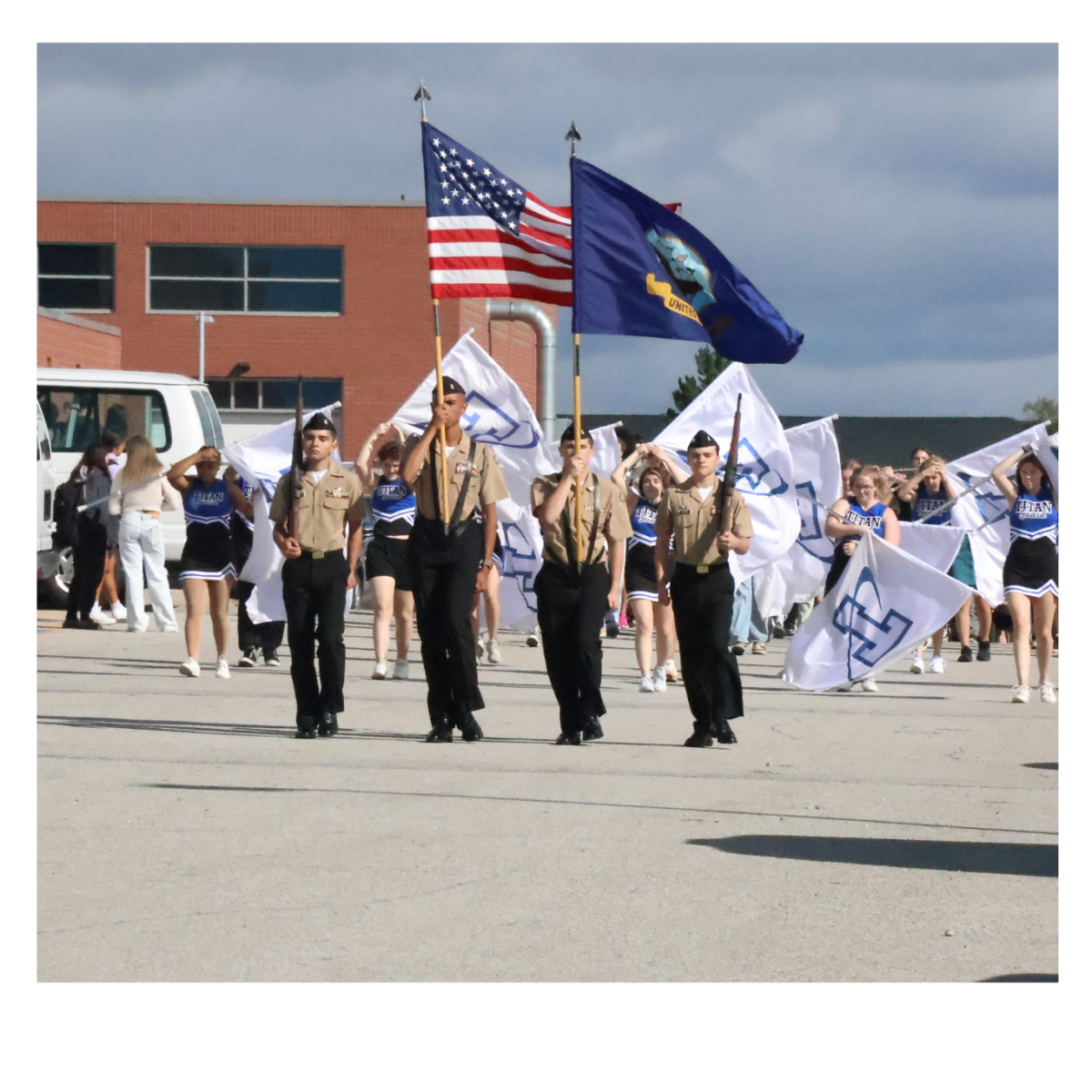At the same time as many high schoolers are learning the rules of the road, seniors Rylie Horner and Schaefer Rogers are learning the rules of the sky. They have been studying to get their Private Pilot Licenses while in high school, flying out of Offutt Air Force Base. Rogers has already earned the license, while Horner is expecting to do the same in the next month.
“I started off with Offutt and the LeMay Aero Club… I took up my first flight with one of my dad’s work friends, who was my instructor throughout. And I just kind of fell in love with it from there. I knew that it was something that I needed. I wanted to do it and it was for me,” Rogers said.
“My dad’s in the Air Force, so I grew up flying on AC-135’s. I was always around the flight line and always around planes, and I realized this is actually something I want to do…,” Horner said. “ We found this opportunity on [Offutt]: You can do a discovery flight, which is when you go up for a cheap amount and then make sure you want to do it. So I did that, and then was like, ‘Omigod, yes, I need to do this.’”
Peers and teachers encouraged Horner to reach out to Rogers to discuss their shared experience in aviation. Now the pair are planning to take flights together once Horner earns her license.
“So I literally just DM’ed [Rogers] on Insta and was like, ‘Hey, I heard you fly. I fly, too.’ Then we talked about that a little bit… He flies on base, too, and so… there’s some common ground there. I was like… ‘Once I get my license, we should fly together so we can split costs and still get some hours,’” Horner said. “We haven’t gone into detail about it, but I assume just a couple of small flights. The longer the flight is, the more expensive it is… It adds up pretty quickly with, you know, a high school student bank account.”
The costs of flying out of Offutt with the LeMay Aero Club and refueling in Plattsmouth are as follows, according to Horner: $155-$200 per hour for plane rental, depending on the plane; $4.79 per gallon of fuel, with each flight consuming 8-20 gallons depending on the distance covered; and $50 per month for LeMay Aero Club membership. For a student pilot at the LeMay Aero Club, an instructor costs $35-40 per hour, whereas online Ground School, the classroom portion of earning a Private Pilot License, costs an estimated $300.
Rogers said it took him about three months of online classes, doing two and a half hours a day, to complete Ground School.
“A minor in meteorology is what everybody calls it… Just because you have to understand and be able to predict weather conditions,” Rogers said. “There’s the ground operations, like knowing the aircraft, knowing all the systems of the aircraft, and knowing how your engine works. It dives pretty deep into every detail of the aircraft so that, if anything were to go wrong, you know what to do and how to fix it in an emergency situation.”

In addition to the Ground School requirement, anyone who wants a Private Pilot License must: be at least 17 years old; read, write, and understand English; undergo a Federal Aviation Administration medical exam; be a U.S. citizen or gain permission from the Flight Training Security Program; pass the FAA’s knowledge exam; pass a flight test overseen by an FAA examiner; and log 40 hours of flight time.
Of those 40 hours of flight time, 20 hours must be with an FAA-approved instructor, 10 hours must be flown solo, three hours must be at night, three hours must be instrument time, and three hours must be cross country.
The FAA defines instrument time as piloting a plane while only referencing instruments, which inform the pilot of the plane’s position and direction. It defines a cross country flight as a flight covering a distance greater than 50 nautical miles from the starting point. One nautical mile is 1,852 meters, or as Horner would say, “It’s a mile plus a little bit.”
The 10 required hours of solo flight give student pilots the chance to have complete control of the plane without an instructor to take over if something goes wrong.
“That was just crazy to go up for the first time by myself,” Horner said. “And then … flying cross country solo… I’m a 17-year-old flying a plane 100 miles away by myself.”
Horner said a young pilot would need to depend on a good instructor to know when they were ready to go solo.
“If an instructor is honest with you and says, ‘Hey, you can do this,’ then you can trust in that. If you go up with an instructor, and you have a couple of flights where you can just do everything by yourself without having to be reminded or like having any prompts or help, then that helps as well…,” Horner said. “So I think that was a big part for me, knowing, ‘Oh, look, I’ve done this before. It’s nothing new.’”

Once the requirements for a Private Pilot License are completed, one can fully enjoy the privileges that come with the license, such as flying oneself to a college visit.
“I took one of the Aero Club planes up to Colorado to go do a tour of the Air Force Academy with my dad,” Rogers said. “We weren’t waiting on any planes. We weren’t going through TSA. We just hopped in the plane at Offutt and flew off and then landed… It was just really cool, because we had the freedom to leave and go wherever we wanted. It’s the pleasure of travel without the stress of [flying] commercial.”
Both Horner and Rogers have flying in their long-term plans, as Horner was accepted into Utah State University’s aviation program and Rogers is awaiting his admission decision from the Air Force Academy. Rogers was also accepted into Texas A&M.
“My long term would be living in Europe, flying for like British Airways, Lufthansa or even United and Delta,” Horner said. “ I just want to travel. I might join the Air National Guard… I’m still kind of thinking the key is with the military, I just want to fly the plane; I don’t want to be active duty. I want the cool toys,” Horner said.
“After the Air Force, my passion would probably be to be a Life Flight pilot,” Rogers said. “So medevac and either transitioning to helicopters or staying in the fixed plane world and just becoming a long-range medevac… If you had a regular ambulance, those people might not be alive by the time they get to the hospital, but you can send in a helicopter and have them to a grade A hospital in a matter of minutes, which I would love to help with.”


![Pictured above is a structure that displays the names of Nebraska Vietnam veterans in order to “honor [their] courage, sacrifice and devotion to duty and country.”](https://plsouthsidescroll.com/wp-content/uploads/2025/10/Trey_092625_0014-e1760030641144-1200x490.jpg)
























